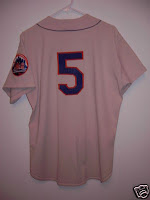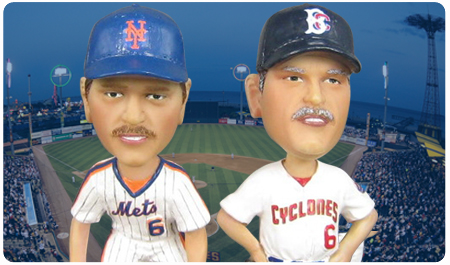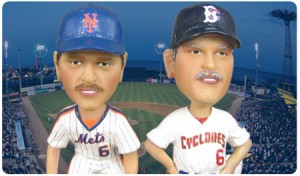Before you start rolling your eyes and think that 70’s week is going to be all about mules and uniforms, here’s some real writing…a loaner post from Greg Prince of Faith & Fear in Flushing from 2005 (so don’t get confused when he says that was “30” years ago.)
The year was 1975. I was 12 years old.
The world was full of possibilities. I graduated from elementary school and was heading for junior high. I wriggled out of an involuntary tour of duty at Camp Avnet, the last time I’d be bothered with that thing of childhood, and was left to my own devices for the summer. I started to have funny feelings that had nothing to do with Ed Kranepool, but I was 12, so never mind that right now.
Mostly I was enchanted with the possibility that the Mets would win the World Series in 1975. I was taken with the idea that the Mets could have good players, the kinds of players other teams had — actually a bunch of players other teams did have. I was thrilled that several of the players the Mets had had almost since I started watching them were going away.
I was loyal to the Mets, but as for individual Mets, I’d turn almost any and every one of them over if it meant putting behind us the miserable 71-91 record of 1974. That was the first losing season I ever experienced and I sure hoped I would never, ever see another one.
It was as if Monty Hall was asking me to choose between displaying loyalty and eschewing futility. I opted for Door No. 2. For as long as I could remember, the Mets had counted on miracles. I preferred to maintain a solid, all-around team, one with not just pitchers but hitters.
We would have that in 1975. I was certain.
So goodbye old players. See ya later Ken Boswell; see ya now Bob Gallagher. It’s been nice knowin’ ya Duffy Dyer; it’ll be nicer knowing Gene Clines. Ray Sadecki, it was fun, but Joe Torre could be a barrel of laughs and RBIs. Teddy Martinez’s utility was interchangeable with Jack Heidemann’s and we get some minor leaguer named Vail.
Joe McDonald, the new GM, did all that for me in the fall of 1974. Then he went to the winter meetings, an affair I followed breathlessly, and brought us back a professional centerfielder named Del Unser, a stud catching prospect named John Stearns and a relief pitcher I’d heard of, Mac Scarce. We dumped Don Hahn (who never hit), Dave Schneck (who let me down) and, uh, Tug McGraw.
The Mets traded Tug McGraw. I was less than a month from turning 12 when I heard the news. Tug McGraw had led the Mets to their most recent pennant. Tug McGraw had been with the Mets as long as I could remember. Tug McGraw was already a legend.
But I liked the trade. Where the 1975 Mets were concerned, I loved trades. I loved trades more than I loved players. 1969 was a long time ago. I was getting tired of being beaten by the Pirates almost every year. We needed to shake things up and Joe McDonald held my proxy. Continue reading “Mets Police 70’s week: Faith & Fear’s 1975”









